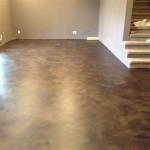How To Set a Dehumidifier for Your Basement
Maintaining a dry basement is crucial for preventing mold growth, protecting stored items, and ensuring the structural integrity of a building. A dehumidifier is an essential appliance for basements prone to dampness or high humidity levels. Properly setting up and operating a dehumidifier will maximize its effectiveness and extend its lifespan. This article provides a comprehensive guide on how to set a dehumidifier for a basement, covering important factors, optimal settings, drainage options, and maintenance tips.
Understanding Basement Humidity
Before setting up a dehumidifier, it is important to understand humidity levels in a basement and how to assess the extent of the problem. Humidity refers to the amount of moisture in the air. Basements, being underground, are naturally more susceptible to moisture intrusion from the surrounding soil. Several factors contribute to high humidity in basements, including poor ventilation, leaky foundations, condensation, and inadequate drainage. Identifying the sources of moisture is important for addressing the root causes of humidity problems, although a dehumidifier can manage the excess moisture.
Ideal relative humidity levels are generally considered to be between 30% and 50%. Measuring humidity levels can be achieved with a hygrometer or a humidity sensor. These devices provide accurate readings of the relative humidity in the air. Regular monitoring of humidity levels is recommended, especially during periods of heavy rainfall or seasonal changes, to ensure that the dehumidifier is working effectively and maintaining a safe and comfortable environment. If humidity levels consistently exceed 60% or 70%, this indicates a need to address the underlying causes of moisture intrusion and to optimize the dehumidifier settings.
Symptoms of high humidity in a basement are often noticeable. These can include musty odors, visible mold or mildew growth, condensation on walls or pipes, damp spots on the floor, and warping or rotting of wooden structures. Stored items may also show signs of damage from moisture, such as rust, corrosion, or deterioration. Addressing these problems promptly is critical to prevent further damage and health risks.
Choosing the Right Dehumidifier
Selecting the appropriate dehumidifier for a basement depends on several factors, including the size of the basement, the severity of the humidity problem, and the presence of any specific features or requirements. Dehumidifiers are rated by their capacity, which is measured in pints of water they can remove from the air per day. Common sizes range from 30-pint models for small basements with moderate humidity to 70-pint models for larger basements with severe humidity issues.
To determine the right size, measure the square footage of the basement and assess the level of dampness. For example, a 500-square-foot basement with moderate humidity might require a 30-pint dehumidifier, while a 1000-square-foot basement with high humidity could need a 50-pint or 70-pint model. If in doubt, it is better to choose a larger-capacity dehumidifier, as it can always be adjusted to run less frequently, while a smaller unit may struggle to keep up with high humidity levels.
Energy efficiency is another crucial consideration. Look for dehumidifiers with the Energy Star label, which indicates that they meet strict energy efficiency guidelines set by the Environmental Protection Agency (EPA). Energy Star-certified dehumidifiers consume less electricity, resulting in lower operating costs and reduced environmental impact. Additional features to consider include adjustable humidity settings, automatic shut-off, a built-in humidistat, and a timer. These features provide greater control over the dehumidification process and allow for customized operation based on specific needs and preferences.
Drainage options are also important. Dehumidifiers typically come with either a removable water tank or the option to connect a drainage hose for continuous draining. If the dehumidifier is located in an area where it is difficult to frequently empty the water tank, a drainage hose is preferable. The hose can be connected to a nearby drain or a condensate pump to remove the collected water automatically. Some models also offer a built-in pump that can pump water vertically, allowing for more flexible drainage options.
Optimal Dehumidifier Settings and Placement
Proper placement and setting of a dehumidifier are crucial for maximizing its effectiveness and ensuring optimal performance. The ideal location for a dehumidifier is in a central area of the basement, away from walls and obstructions, to allow for optimal airflow. Ensure that there is adequate space around the dehumidifier for air to circulate freely. Avoid placing the unit in a corner or against furniture, as this can restrict airflow and reduce its efficiency.
The humidity setting on the dehumidifier should be adjusted based on the desired humidity level and the specific conditions in the basement. As mentioned earlier, a relative humidity level between 30% and 50% is generally recommended. Start by setting the dehumidifier to a slightly higher humidity level, such as 50%, and then gradually decrease the setting until the desired humidity level is achieved. Monitor the humidity levels regularly using a hygrometer to ensure that the dehumidifier is maintaining the target range.
For basements with persistent moisture problems, it may be necessary to run the dehumidifier continuously, especially during humid seasons. Many dehumidifiers have a continuous mode that allows them to run without interruption. However, it is important to monitor the water collection and drainage to prevent overflowing. If using a water tank, empty it regularly, or connect a drainage hose to a nearby drain. In less humid conditions, the dehumidifier can be set to run intermittently, based on the humidity levels and the specific needs of the basement. Utilize the timer function, if available, to schedule the dehumidifier to run during peak humidity periods or at specific times of the day.
Regularly check and clean the air filter on the dehumidifier to ensure optimal performance. A dirty air filter can restrict airflow and reduce the dehumidifier's efficiency. Most dehumidifiers have a removable air filter that can be easily cleaned with a vacuum cleaner or by washing it with mild soap and water. Allow the filter to dry completely before reinstalling it. Follow the manufacturer's instructions for cleaning and maintaining the air filter to ensure the dehumidifier operates efficiently and effectively.
Consider additional strategies for improving basement ventilation and reducing humidity. Opening windows and doors, when weather permits, can help to circulate air and reduce moisture buildup. However, be cautious when opening windows during humid weather, as this can introduce more moisture into the basement. Using exhaust fans in bathrooms and laundry rooms can help remove moisture from the air and prevent it from spreading throughout the basement. Insulating walls and pipes can also help to reduce condensation and prevent moisture problems.
Key Points for Setting Your Basement Dehumidifier
Selecting the Correct Size
Choosing a correctly sized dehumidifier is the first crucial step. Review the square footage of your basement and gauge how damp it generally feels. A smaller dehumidifier in a large, persistently damp basement will work constantly without solving the problem, raising your energy bill and potentially leading to the unit's premature failure. Conversely, a massive dehumidifier in a small, relatively dry basement would be an inefficient use of energy. Refer to the guidelines provided by the manufacturer for selecting the right capacity based on your basement's specific characteristics.
Setting the Humidity Level
The dehumidifier's settings are key to long-term effectiveness. While an aggressive setting might seem appealing initially, maintaining a relative humidity level that is too low could lead to excessive dryness, which might harm wooden furniture, floors, or even certain building materials. Aim for the 30-50% range. Regularly check the humidity levels using a hygrometer, particularly during seasonal changes, and adjust the dehumidifier settings accordingly. The goal is to find a balance that prevents mold growth and moisture damage without creating an overly dry environment.
Efficient Drainage Options
The drainage method is a practical consideration that greatly affects the frequency of maintenance. While a dehumidifier with a water tank might be suitable for occasional use or a small space, continuous operation in a damp basement will necessitate frequent emptying. Connecting a drainage hose to a floor drain or using a condensate pump for upward drainage offers a significantly more convenient solution. Regular inspection of the hose and drain is essential to prevent clogs or leaks that could lead to water damage. Proper drainage ensures the dehumidifier can operate uninterrupted, maintaining the desired humidity levels without requiring constant manual intervention.

How To Set Your Dehumidifier

What Is The Best Humidity Setting For A Dehumidifier

How To Set Your Dehumidifier Sylvane

Troubleshooting A Dehumidifier That S Not Working How To Handle Nonfunctional Or Ineffective Basement

Expert Basement Dehumidifier Installation In New Jersey

Measuring The Efficiency Of A Room Dehumidifier Energy Vanguard

Dehumidifier Setting Chart What Should Be Set At

How To Duct Your Dehumidifier Sylvane

Installing Whole House Dehumidifier The Right Way Pv Heating Cooling Plumbing

How To Duct Your Dehumidifier Sylvane
Related Posts







